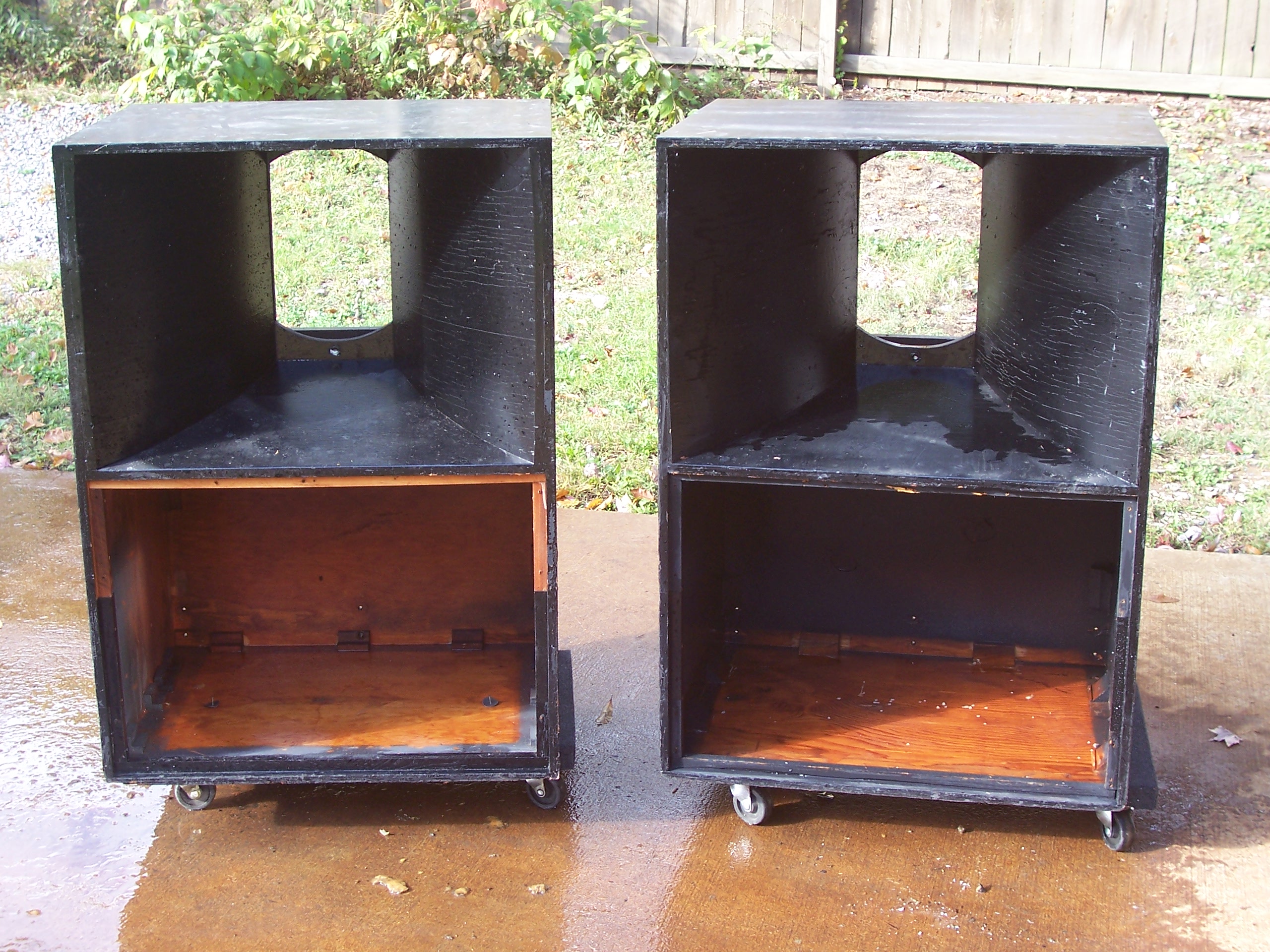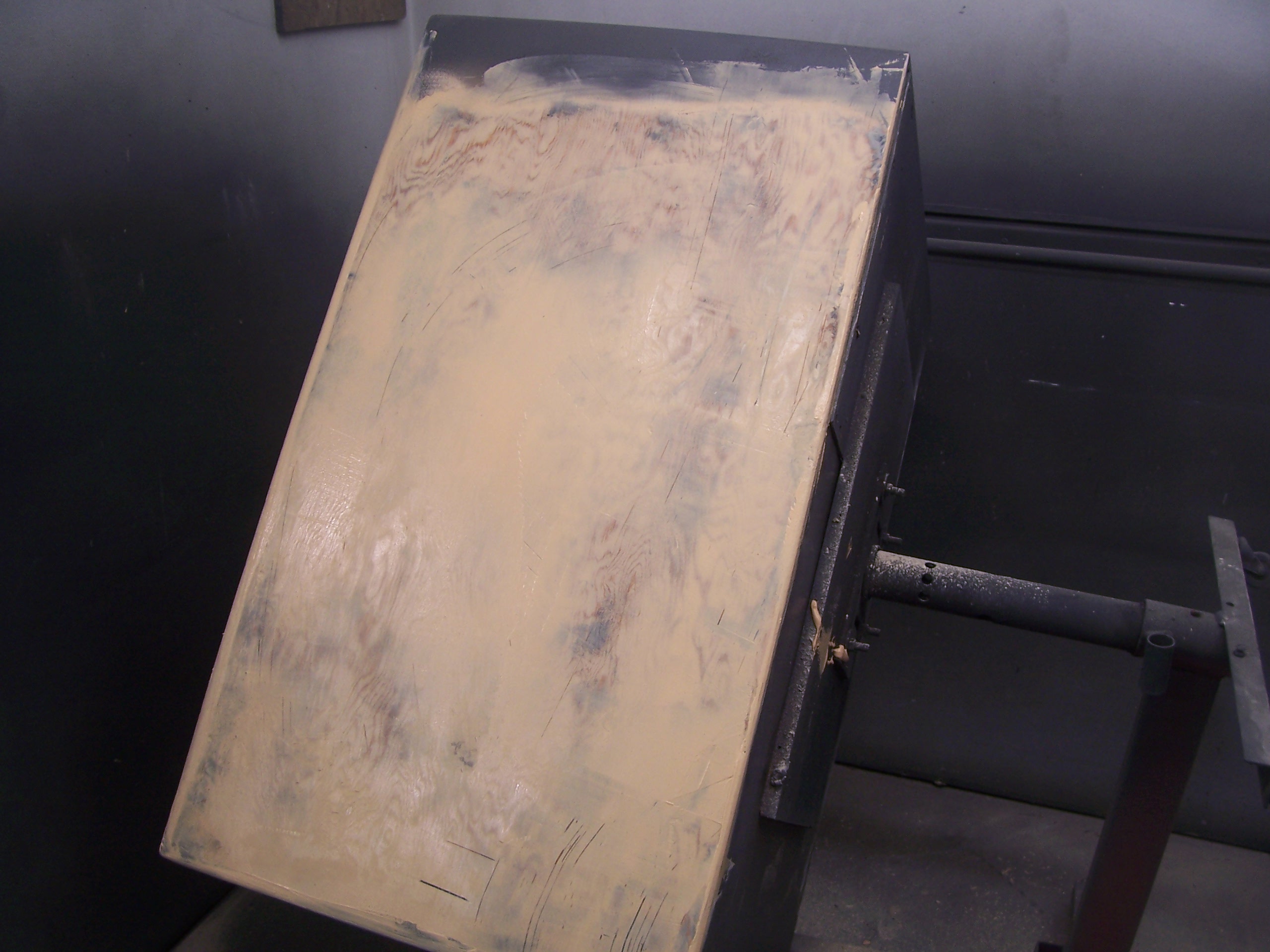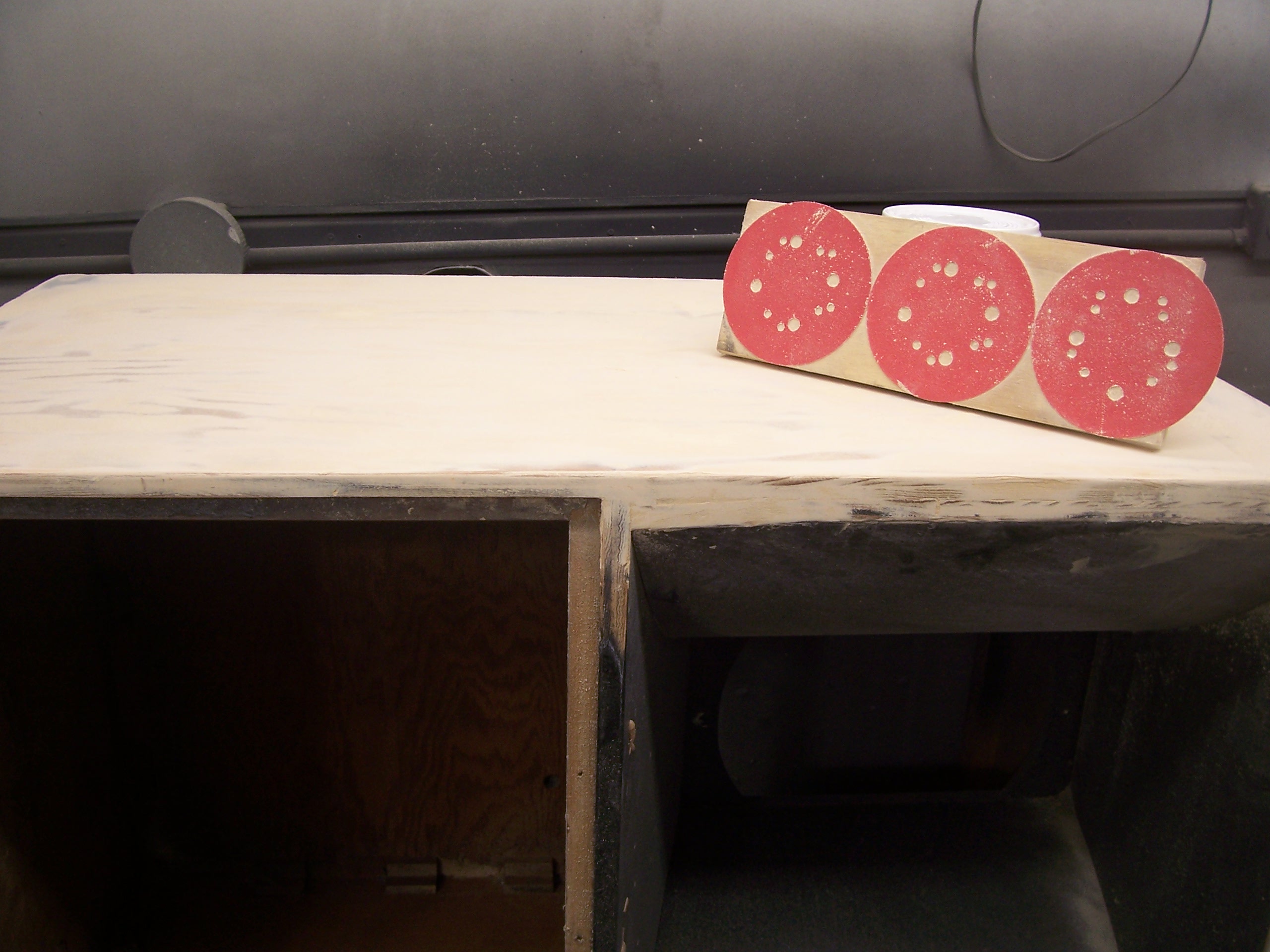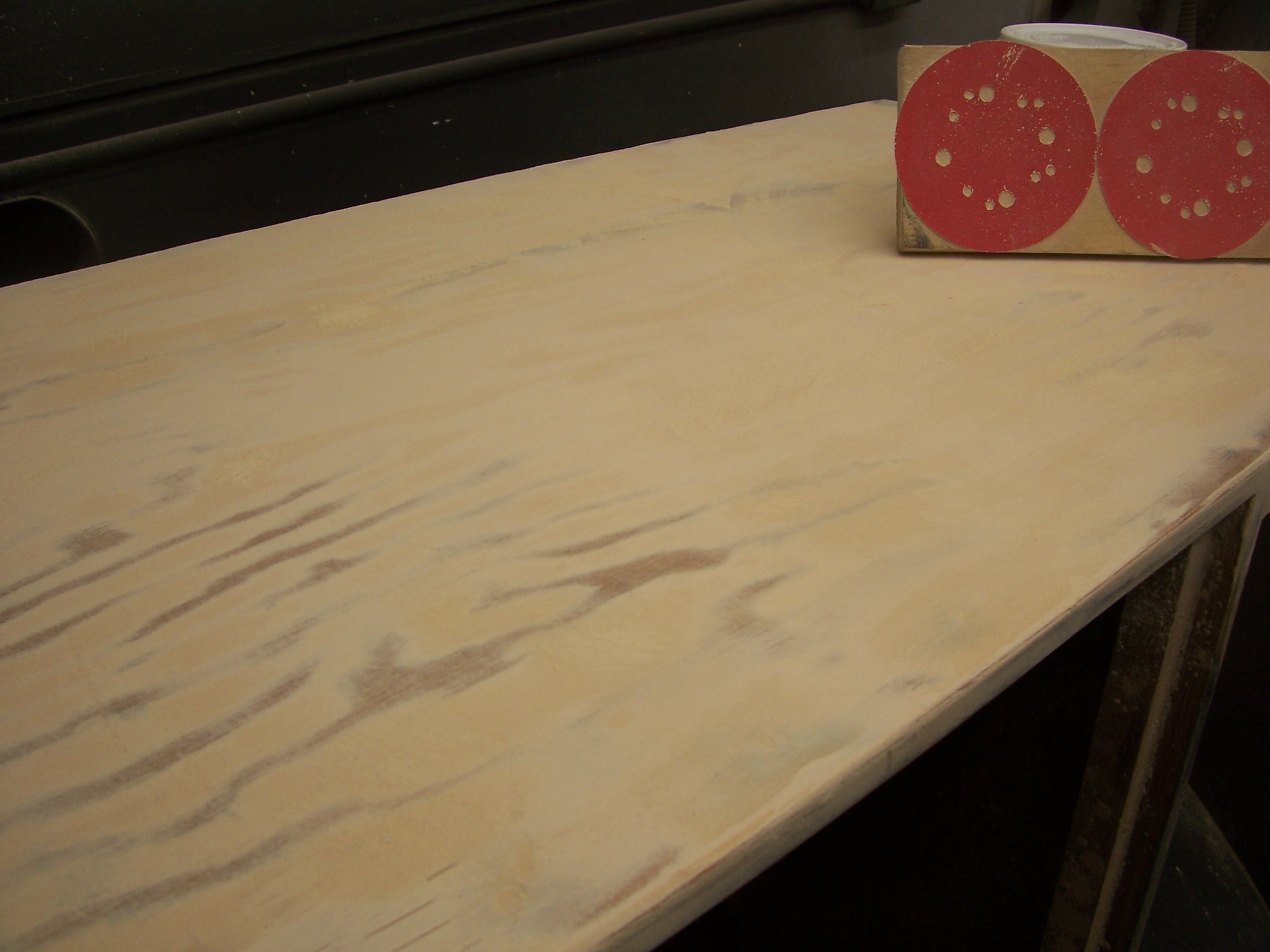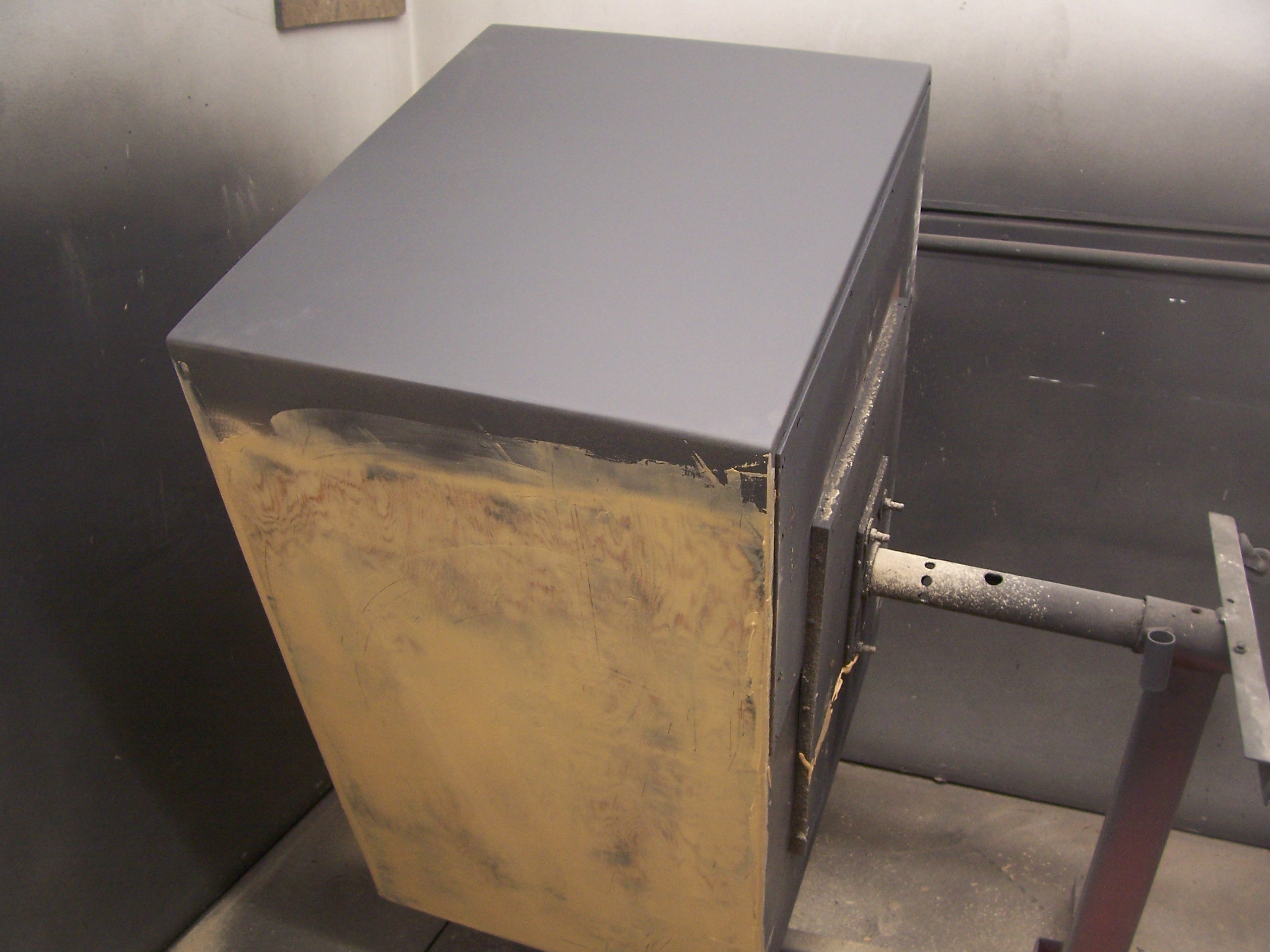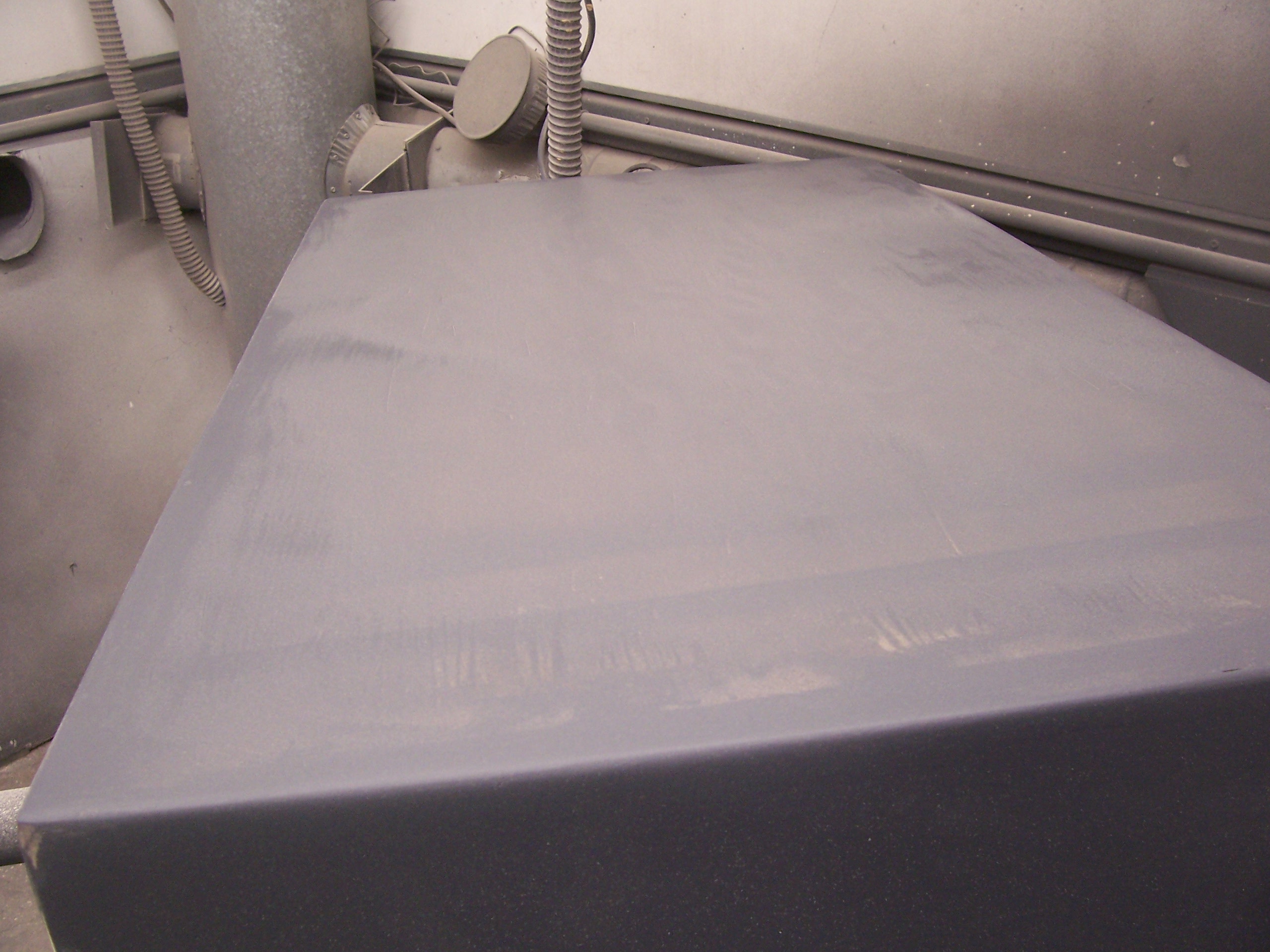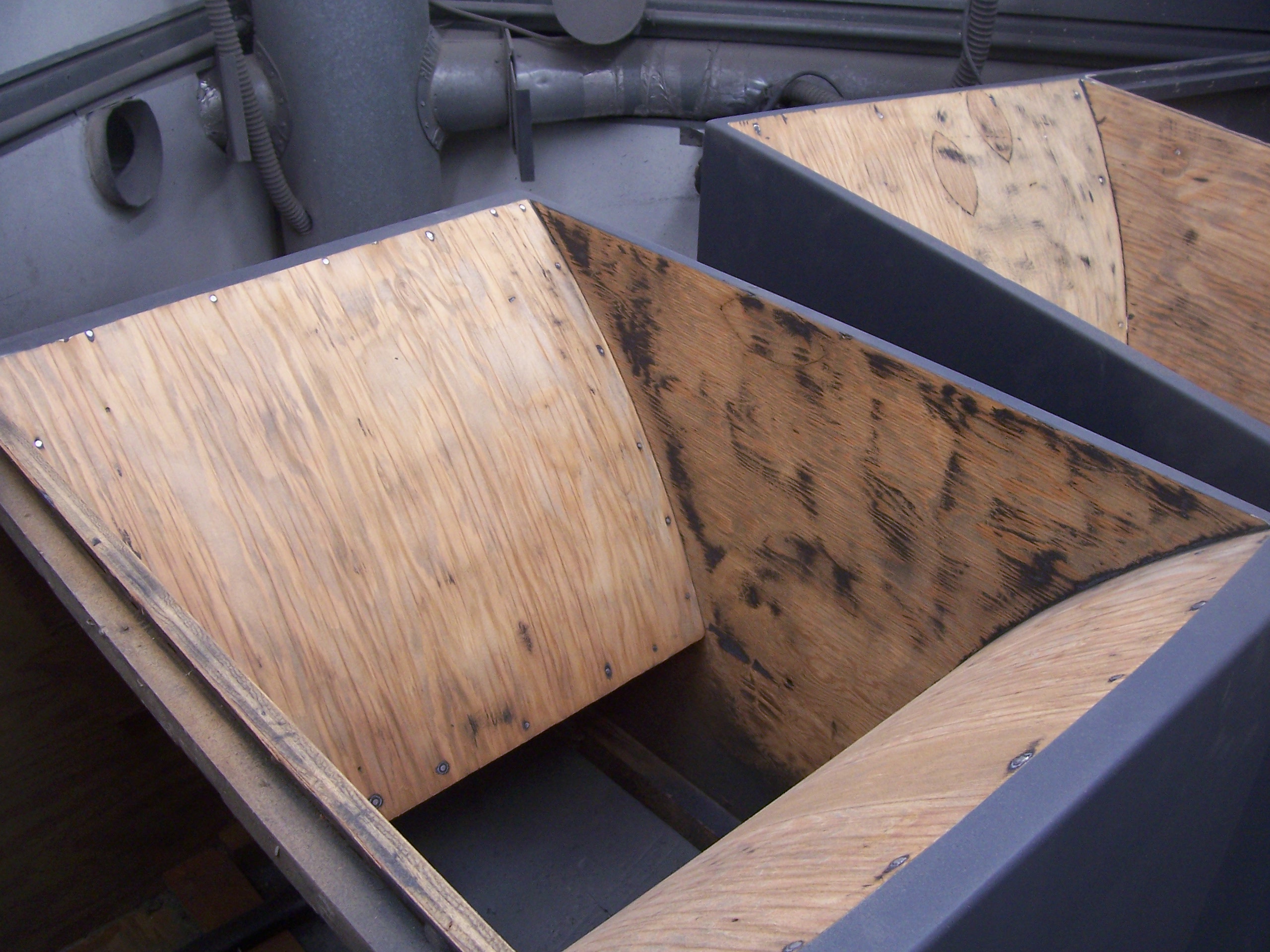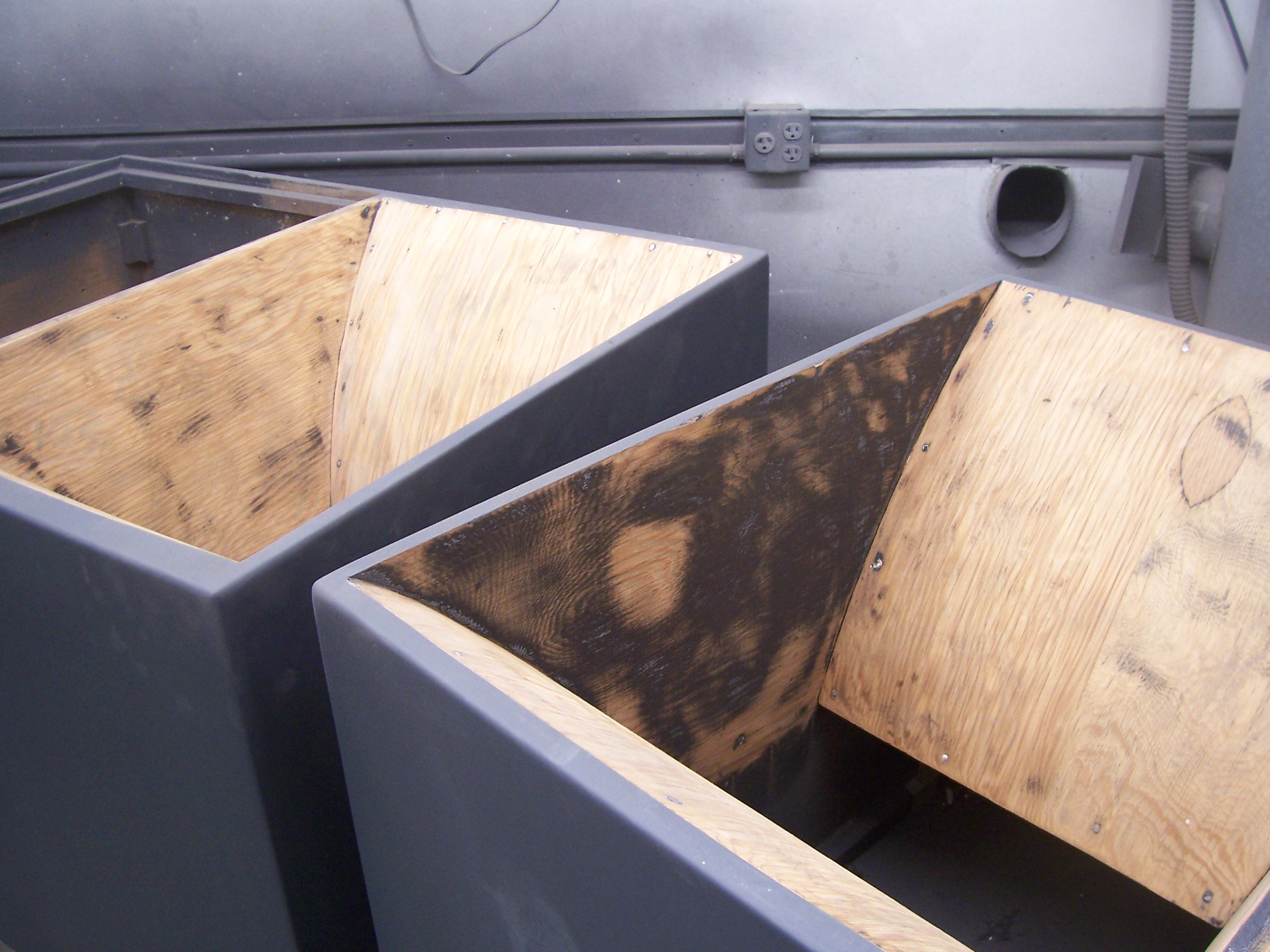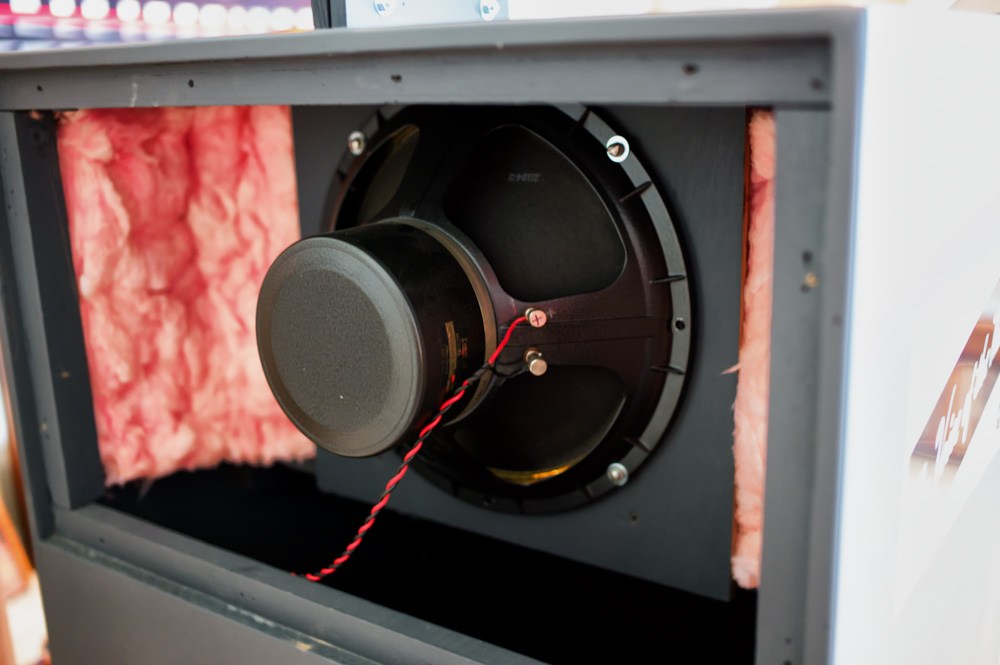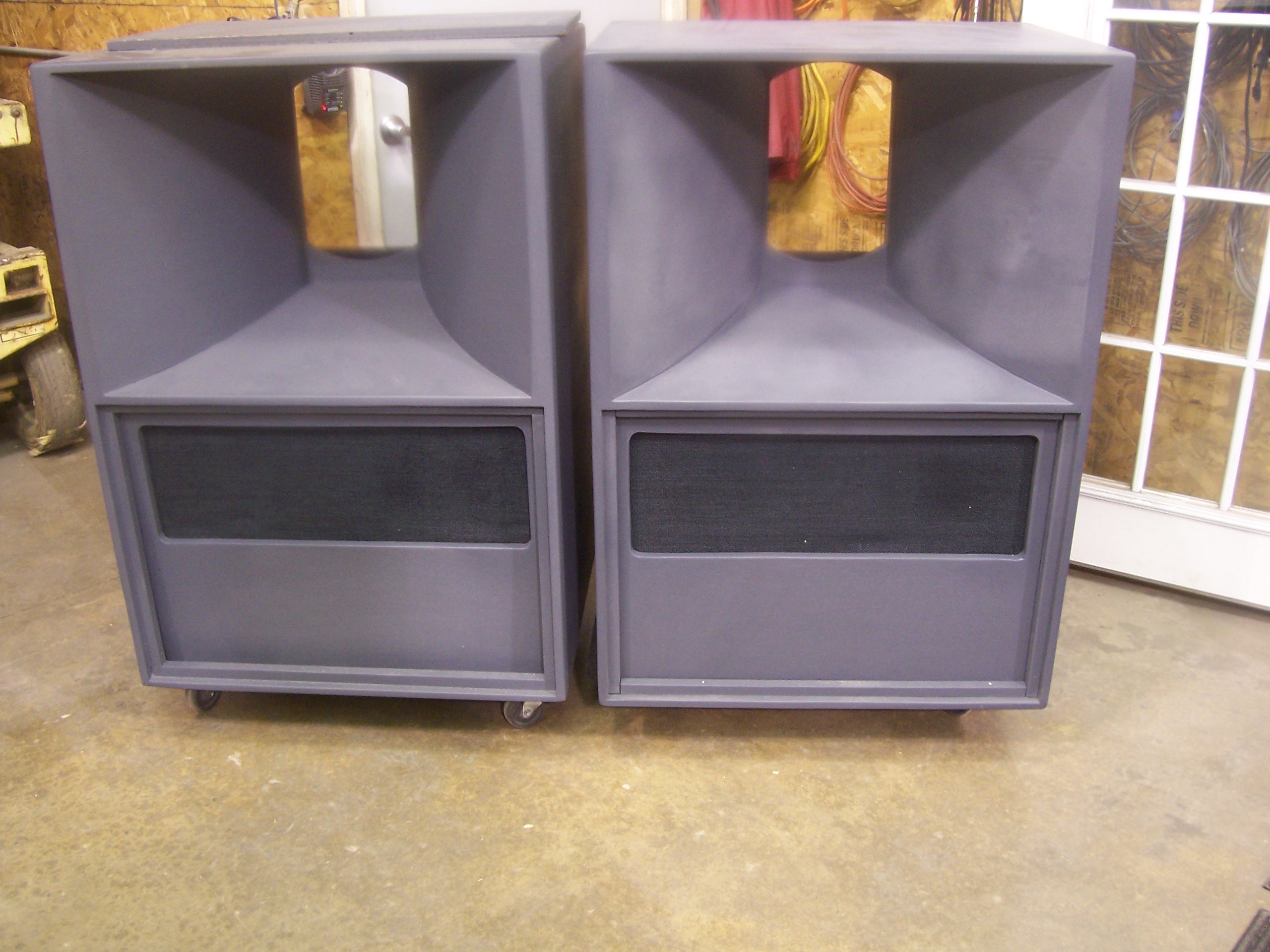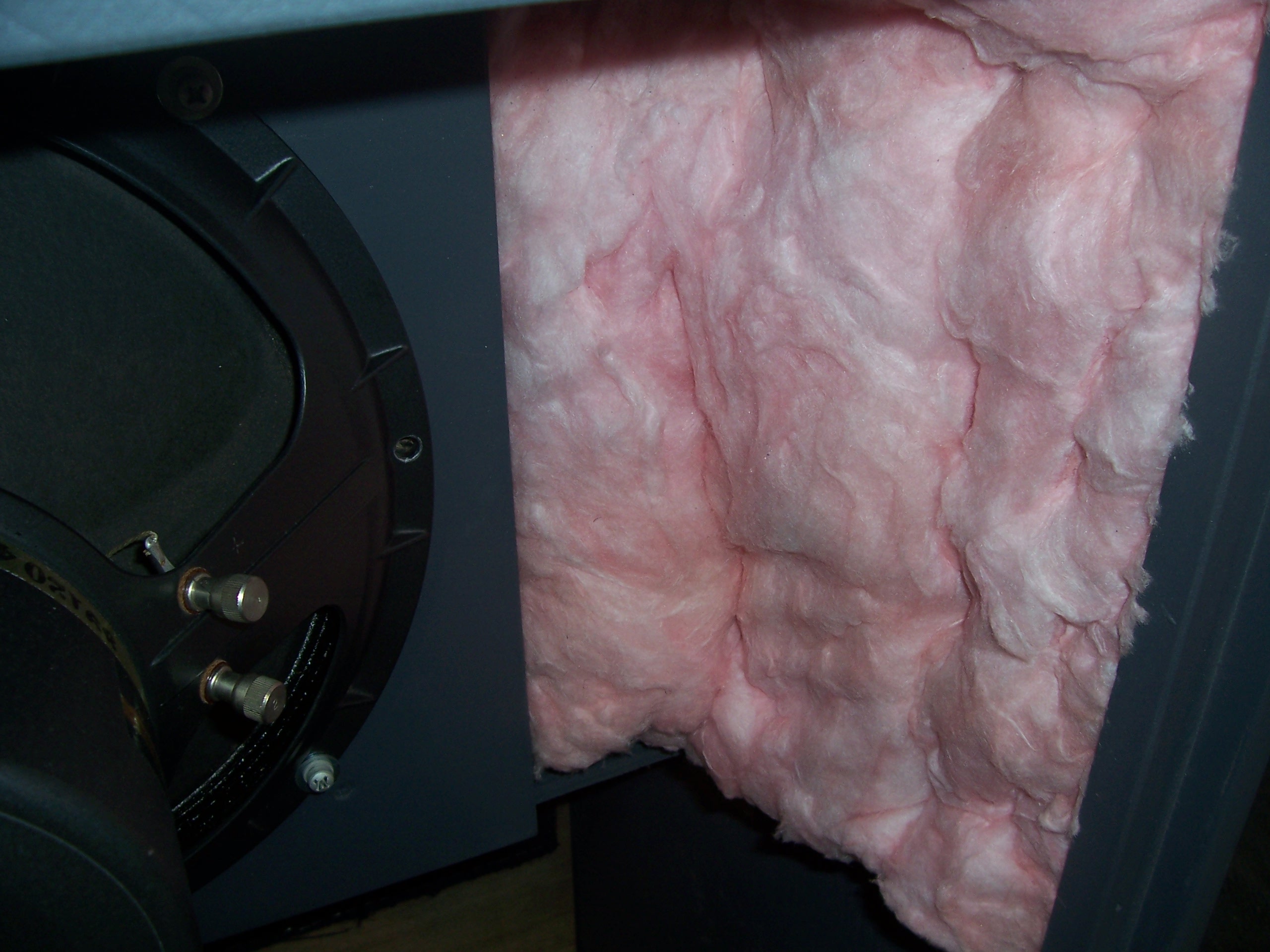As I promised in my Part 1 blog post, using the A5 VOTT loudspeaker system that Gary Fischer restored for me as an example (below), I’ll describe the details of Gary’s restoration process.
One thing that I really appreciated was that Gary sent me photos and kept me informed about what he was doing as the restoration proceeded, which really gave me a greater understanding of the A5 Voice of the Theatre loudspeaker system, and what was involved in restoring it.
Gary’s first step in the restoration process is the cleaning, stripping, refinishing, and repainting of the bass horn cabinets.
Gary told me that there were over 250 subcontractors that provided Altec-Lansing with bass horn cabinets for the Voice of the Theatre loudspeaker systems over the years, and those cabinets varied considerably in the materials used and their quality, as well as the quality of construction of the cabinets, and how well the cabinets met Altec’s specifications.
There is a fair amount of debate among Voice of the Theatre enthusiasts as to which is the most desirable of the vintage Altec A7/A5 bass horn cabinets. The earlier 825 bass horn cabinets used a two-piece rear panel, with the top panel being removable, and with the Altec plans specifying 5/8-inch thick plywood for the cabinets. The next generation 828 bass horn cabinets were made of either 5/8 or 3/4-inch particleboard, and were more heavily braced than the 825 cabinets.
Gary thinks the best of the 825/828 bass horn cabinets built were the 7-plie plywood 825B cabinets, and he picks the very best of those for his restorations. While popular with some enthusiasts, Gary considers the 828 bass horn cabinets to be “Junk!” and steers clear of them. Gary picked out nice examples of the 825B bass horn cabinets for restoration for my A5 Voice of the Theatre loudspeaker system.
Gary told me that a lot of Altec cabinets have been sitting in theaters for fifty years with little or no maintenance, so they have collected fifty years worth of dust, grime, spider webs, bugs, and the like, so the first step is a good cleaning of the cabinets.
Gary told me that he sanitizes and power washes the cabinets, sending “Fifty years of historic dirt and grime down the drain!” The clean 825B bass horn cabinets are then air-dried by large fans for a day.
Gary strips and refinishes the cabinets in a process that he says is “… very similar to refinishing a automobile.” First he takes the existing finish off to see what he has to work with.
Gary told me, “I have seen cabinets repaired with automotive body filler, hot glue, and epoxy, none of which truly bond to the wood. I have seen cabinets literally hollowed out by termites, with renders the cabinet to firewood.”
Gary plugs all the holes with cut dowel rod and wood filler, and then applies surfacing material, and block sands them to a flat surface.
Then they go into the paint booth for repainting. First the top, sides, and bottoms are refinished and painted.
Then Gary strips, refinishes, and paints the low frequency horn section.
Gary told me, “This step is always very time consuming to get it right. I remove the rear driver mount plate to simplify the process (and it is always loose in every cabinet), and then I reinstall it with wood glue and drywall screws to eliminate any resonance.”
Gary went on to tell me, “The various cabinet builders Altec contracted (and there were hundreds), apparently had very little quality control when building the cabinets, and no two cabinets came out the same. I have received cabinets completely out of square, leaning to one side or the other by as much as a half-inch top-to-bottom. I guess Altec did not care. The thickness of the plywood used also varied from cabinet to cabinet. It can make restoring something that was never right in the first place a challenge!”
While Gary was in the process of stripping, refinishing, and repainting the cabinets, we discussed some of the modifications mentioned in John Stronczer’s (Bel Canto Design) article in Sound Practices Issue 11 about adapting the Altec A5 Voice of the Theatre to home use.
In particular, John Stronczer said that in the older cabinets like the 825, he thought they needed to have the area behind the short horns closed off, as well as having the port area closed off by up to 50% to perform at their best. John said a port area of 25.5-inches by 8.25-inches turned out to be nearly ideal for his A5s.
Gary told me, “I stuff the bass driver horn cavities with high-density fiberglass to damp the sidewalls of the horn, and I use 3.5-inch fiber glass on the back and the floor of the cabinet to control cabinet resonance. I don’t think there is a need to mechanically block off the horn side cavities, as they are tightly stuffed. As for the port opening, I will cut a new piece of 3/4 plywood with the opening dimensions John suggests and install it in the port opening.”
Gary also told me, “In the fifty-something pairs of 828 and 825 cabinets I have serviced, none of the horn side walls were blocked off, and not even damped by anything, which in my opinion, was a mistake by Altec. But Altec was not looking for pure sound, they just stuffed these Voice of the Theatre loudspeaker systems behind viewing screens around the world, and they remained there for decades at a time. Now we have a new audience listening to these components, using them for something they were never designed for – high-end audio – and we’ve discovered the need for refinement to get the best sound out of them. That takes a good ear and the ability to re-engineer what we have to work with.”
In the photo above you can see the 825B cabinets after they “came out of the finish & rough-sand stage, and ready to go to the scuff & polish stage … you can see we fabricated the 25 1/2 by 8 1/4 port you requested. They are just sitting in the cabinet for pictures, and are not mounted yet.”
In the photo above you can see where Gary stuffed the bass driver horn cavities with high-density fiberglass to damp the sidewalls of the horn
In the photo above you can see the 3.5-inch fiberglass that Gary installs on the back and the floor of the 825B cabinet to control cabinet resonance.
At this point the classic 825B bass horn cabinets are finished.
In my next post on Gary’s restoration of the A5 VOTTs I’ll cover the 515B low-frequency drivers, the 288C high-frequency compression drivers, and the 1005B high-frequency horns.
Thanks for stopping by – more soon!






